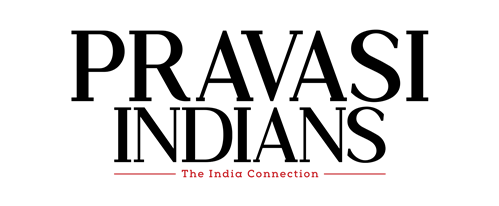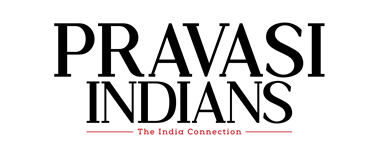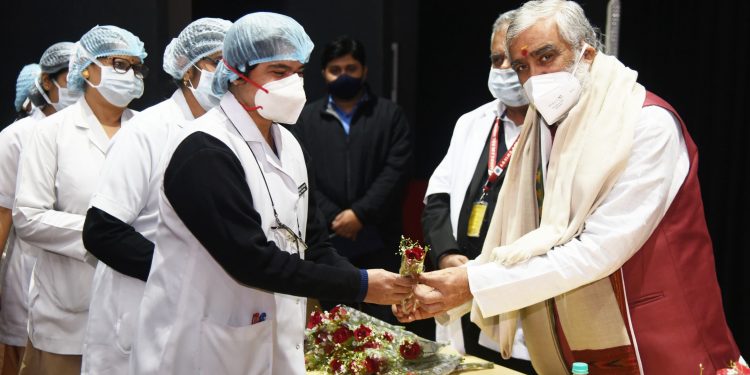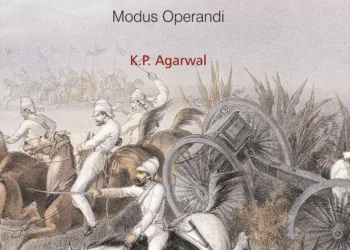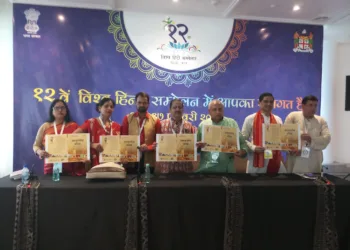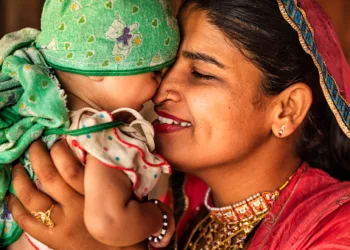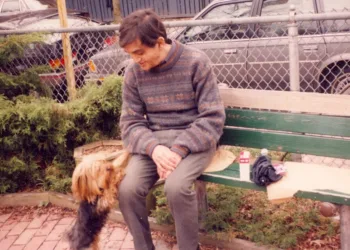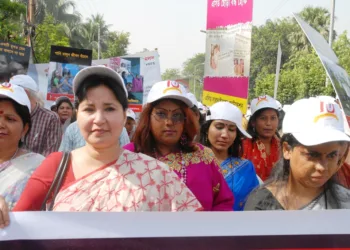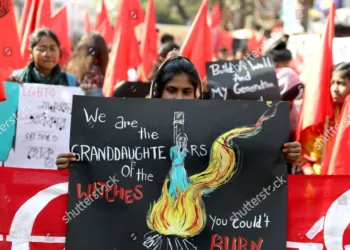The COVID-19 pandemic has shown that managing a huge population with a universal vaccination policy is a humongous task
By B. Shekhar
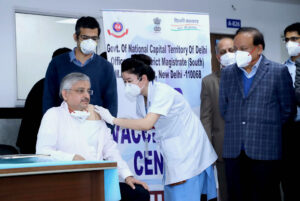
Though India has developed two vaccines for mass production, the sheer population size and the available production capabilities, are capacity do not square with matching with the actual number of required doses we must administer every needed per day to meet the target of for vaccinating its all 18 plus citizens over the age of 18.
The About 60 percent of India’s population of 1.30 crore billion who are is above the age of 18. That makes a total of years totals around 78 crorescrore people to vaccinate. The manufacturing capability capacity as of now is just over 4 crore doses per a month . , and As of now 39 crore of the population is Indians are vaccinated. At this rate it will take anytime between 10 months to and 12 months to achieve the vaccination target, that too if there are no man-made hurdles for the first phase of 60 percent of the population that is eligible to get the jabs. What is a shocker is at this hour of crisis is that, a big percentage of vaccine vials are simply being wasted due to mishandling, logistics/ and storing storage issues and poor scheduling of supplies to different regions across India.
“What is a shocker at this hour of crisis is that a big percentage of vaccine vials is simply wasted due to mishandling, logistics and storage issues and poor scheduling of supplies to different regions across India”
In order to ramp up vaccine production of vaccines, it has been suggested that Bharat Biotech International (BB) and the Serum Institute of India (SII) should decentralise and outsource the formulation to other, private and as well as government-owned, manufacturers. Though the suggestion makes sense, it is easier said than done.
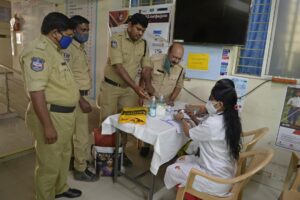
First, is that specialised equipment with exact specifications have has to be installed in the every plants. That would will take anywhere between four to and five months to set up. Second, aspect is related to monitoring quality, which control is actually the key issue that holding holds back BB and SII back to from outsource outsourcing the manufacture of their vaccines. After Going by the recent sabotage of vaccine production of vaccine, BB and SII both have turned become hyper-vigilantover conscious and paranoid about the quality, because as their reputations is are at stake. One mistake and the entire efforts of the scientific and medical communities over the last twelve 12 months will go to waste, and as a direct consequence, investments and the company’s companies’ market capitalisation will can get wiped out within a few seconds, . This which is the last thing that should be allowed to happen after for the extraordinary efforts put in by of these two Indian companies.
India is yet to receive coronavirus vaccines from the US under its global donation programme as certain regulatory issues are holding up the supplies.
Already, political hawks are on the prowlhunt, to turning the a slightest mistake into a mountain of a problem for the Narendra Modi -led Governmentgovernment. A case in point: recently, a section of the politicians played up with the idea of fact that imported blood serum from newborn cattle is calf fat being used in the manufacture of Covaxin, to ruffle Hindu sentiments. All this was That has been scotched when BB clarified by BB. There remains the are possibilitiesy that the company to which production is outsourced company can might succumb to the efforts of play into the hands of mischief-makers either through external coercion or through inducements.
But then tThere are, however, unicorn companies which that are genuinely interested in supporting the scaling scaling-up of efforts of homegrown companies. It is only a matter of time that before BB and SII will get are convinced to hand over the formulation to the outside entities in the interest of the nation.
Similarly, Moderna and Pfizer will start vaccine supplies once their pre-ordered bookings to the America United States and EU European Union regions are met. Recently Lav Agrawal, Joint Secretary, GoI, said that India is talking to Pfizer and Moderna in terms of regulatory pathways and on procurement level. At present, their order book is full. It is when they have the additional supply that their vaccines will come to India, and, depending on that, the government will facilitate their launch.
The mess deliberately created by a section of politicians and ably supported by Indian bureaucracy is behind us.
In the new round of vaccination, countries such as the US and Canada have procured doses not only for their adult populations but also for children in the age group of 12–-16 years old. Vaccine companies are also prioritising countries such as Japan, which has that have placed a $1 billion order worth of for vaccines for the Tokyo Olympics. It came as a surprise move when Pfizer said it won’t wouldn’t transfer its technology to Indian companies until the pandemic phase is was over. That means, that the extra supplies which that should have augmented the universal vaccination drive starting 21 June 21, 2021 now stands a bit delayed. But sSurprisingly, Pfizer has tied up with Chinese drug maker Fosun Pharma for tech transfer to supply 1 billion doses to China, which one is unable to comprehend.
Similarly, India is yet to receive coronavirus vaccines from the US under its global donation programme, as certain regulatory issues are have held holding up the supplies. Last month, the US pledged to ship 80 million crore doses of American American-made COVID-19 vaccines to countries around the world to help them fight the pandemic. A large number of countries, including those in India’s neighbourhood, have already received the vaccines from the US. It was estimated, then, that India could would get one 10–20 lakh to two million doses of the vaccines.
The key reason for the delay is that it is relateds to the issue of indemnity linked to the supply of US vaccines to India. Grant of indemnity would provide vaccine suppliers with protection from legal liability in the event of adverse reaction among the vaccine recipients. India has determined that it needs further time to review legal provisions related to accepting vaccine donations. Once India works through its legal process, the donation of vaccines to India will proceed expeditiously.
As of now, the Russian Sputnik V vaccine against coronavirus, which again was meant to complement the domestic supply, is only coming arriving in a trickles to the country. However, tThe good news, however, is that SII will start production of Sputnik V vaccine at the company’s facilities in September 2021. It is expected that the first batch of Sputnik V vaccine is expected to will be made available for to the public consumption after September. The parties intend to produce over 30 crore0 million doses per year of the vaccine in India per year. As part of the technical transfer process, SII has already received cell and vector samples from the Gamaleya CenterResearch Institute in Moscow. With their import approved by the Drugs Controller General of India (DCGI), the manufacturing process has begun.
Clinical trials are also happening in the space of single single-dose oral vaccine. It is being developed in a capsule form, led that has been developed by Indian pharma company Premas Biotech. The Indian firm has collaborated on this product with the American company Oramed Pharmaceuticals Inc. and announced the oral vaccine with a permissible limit of efficacy after a single dose.
This single dose of the Oravax CovidCOVID-19 capsule has been found effective, and with its efficacy has been proven in a pilot study on animals. The cClinical trials will launch soon. . Oravax’s oral vaccine promotes both systemic immunity by producing Neutralizing neutralising Antibodies antibodies, (IgG) , as well as an IgA immune response, which protects the respiratory and gastrointestinal tracts against infection.
Another vaccine of from Bharat B, developed in partnership with the University of Wisconsin,iotech is also being made to be administered nasally along with the University of Wisconsin,. which It is already undergoing clinical trials already. In India, the human stage trials for nasal vaccines have begun. If regulatory permissions are granted, this will be a big boost for the pan pan-India vaccination drive.
In a nut shell, the COVID-19 immunisation programme, which started with the right intention of vaccinating the Indian population, has had to go through a melee. It has settled down now, and the mess deliberately created by a section of politicians and ably supported by Indian bureaucracy, is behind us. Hopefully, the drive will now move into top gear, and as promised by the Modi Governmentgovernment, by December 2021 at least 60 percent of the population will get the jab and will be safe from the novel coronavirus.
(The author is a Bengaluru-based business journalist associated with IMS Foundation.)
